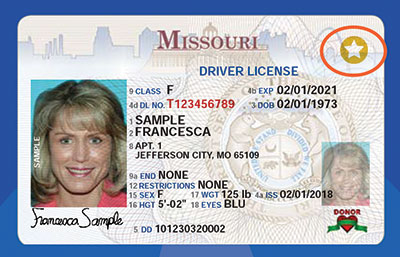
By Ethan Tutor
The Scene staff
The U.S. Department of Homeland Security is requiring all citizens to get “Real ID” cards in order to board airplanes, beginning Oct. 1, 2020.
That includes Forest Park students, faculty and staff.
Computer science major Tesean Hitchens, 21, already has gone to a Missouri driver’s license facility and obtained a Real ID, which can take the form of a driver’s license or state identification card.
It’s supposed to improve security, but he’s skeptical.
“Despite the added security put in place with the new ID’s, someone will always find a way to bypass it,” he said.
Some Forest Park students aren’t even aware of the new requirement. Others have little information.


Network engineering major Jacob Peterson, 22, learned about Real IDs last week from a reporter, who explained the basics.
“I’m not sure how to feel about it,” he said. “I understand the safety precautions, but at the same time, it seems like it kind of restricts people unnecessarily.”
Sam Kandazzo, 37, another network engineering major, had heard about the Real ID, but he didn’t know the deadline date. He’s not too worried, as he hasn’t flown for five years.
“Honestly, my opinion doesn’t matter,” he said. “You need it to fly, and that’s it. It’s a minor hassle.”
The idea for the Real ID came from a 911 Commission recommendation. Congress passed the Real ID Act in 2005, raising standards for getting driver’s licenses and state identification cards to assist federal agencies in rooting out fraudulent ID holders and other dangers to national security.
In 2013, the Department of Homeland Security began the phased process of enforcing the law. Oct. 1, 2020, is the final deadline.
“The Act established minimum security standards for license issuance and production and prohibits Federal agencies from accepting for certain purposes driver’s licenses and identification cards from states not meeting the Act’s minimum standards,” according to Homeland Security’s website.
In practical terms, people will be required to show more proof of identity, residency and other factors than before to get a Real ID.


Forest Park art photography professor Roger Trietley knew about the Real ID requirement, but he rarely flies and doesn’t have a strong opinion about it.
“I’m a little iffy,” he said. “It’s not a terrible thing, but not exactly a necessary thing, either.”
General studies student Tyrell Smith, 19, doesn’t like the new requirement.
“Although I don’t fly often, I still think it’s stupid,” he said. “We were fine with the old IDs as they were.”
Missouri residents can get information for obtaining a Real ID at bit.ly/35A0HpY. They will need to bring the following to a driver’s license facility:
“One document that shows their full legal name, like a certified birth certificate copy or U.S. passport. Some documents can be used to verify both identity and immigration status. One document that proves their Social Security number, such as a Social Security card or W-2 form. Two different documents that prove Missouri residency, such as a utility bill, canceled check or pay stub.”
Real IDs will be required not only to board airplanes, but also to access federal facilities and enter nuclear power plants.
A U.S. Travel Association Survey taken last month showed that a third of Americans haven’t yet obtained Real IDs, according to Brian Weiler, aviation director for Springfield-Branson National Airport, who spoke at a news conference.
“With statistics like this, it seems likely that next October, airports across the country are going to be full of people who can’t board flights because they do not have a Real ID-compliant ID,” he said. “We’re worried about it.”
State officials urge Missouri residents to obtain a Real ID as soon as possible to avoid the rush before the requirement goes into effect.
“Do not wait until right before the Oct. 1, 2020, deadline,” said Missouri Department of Revenue Director Ken Zellers, who also spoke at a news conference. “Please take advantage of these next coming months.”
The Washington Post reported this week that the Department of Homeland Security is looking into streamlining the application process in which applicants could submit their required documents electronically to a state’s Department of Motor Vehicles in addition to, or possibly in lieu of, applying in person.
